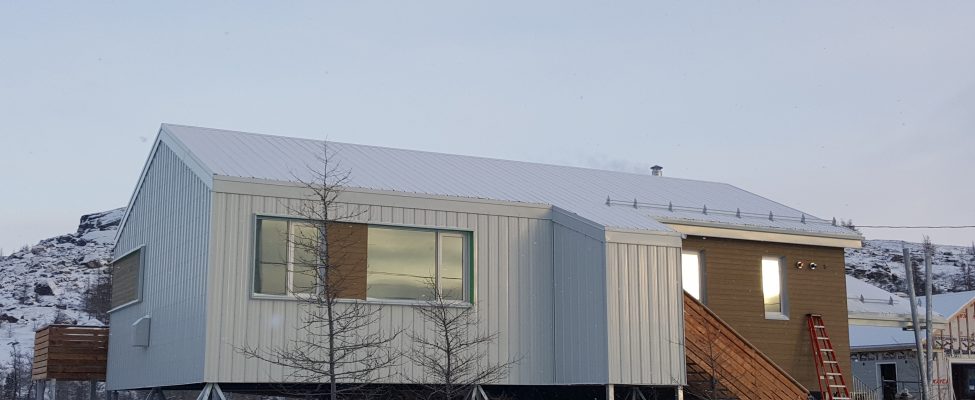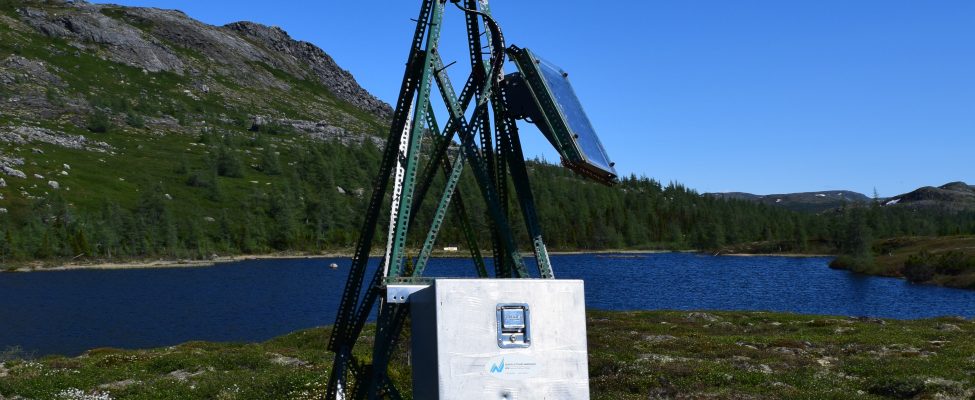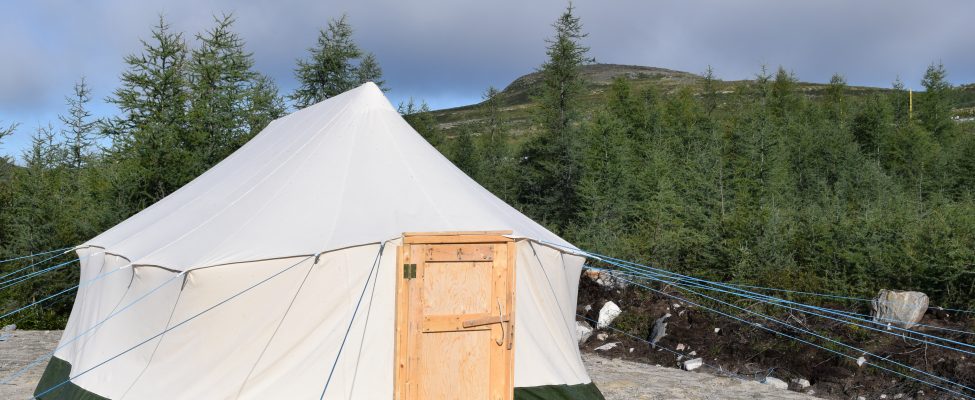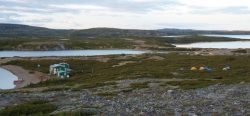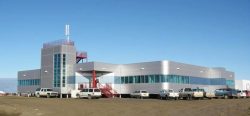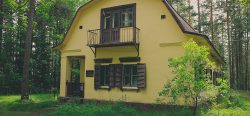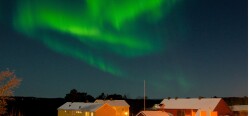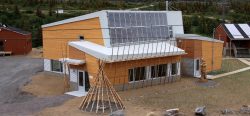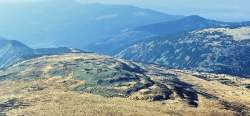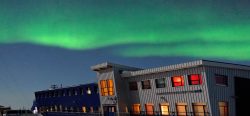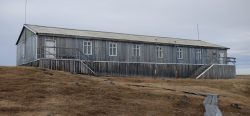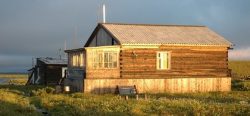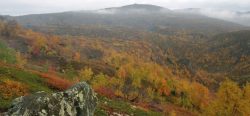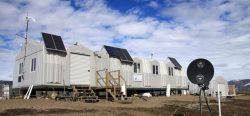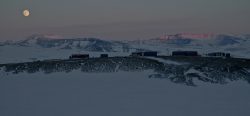STATION NAME AND OWNER
CEN Kangiqsualujjuaq SUKUIJARVIK Research Station is owned and run by the Centre d’études nordiques (CEN: www.cen.ulaval.ca) at Université Laval. The station is part of the CEN Network of research stations. The station is run in close collaboration with the community of Kangiqsualujjuaq and the Qiniqtiq Land Holding Corporation.
BIODIVERSITY AND NATURAL ENVIRONMENT
In terms of wildlife, the distribution of species is closely linked to vegetation, relief and climateThe average weather we would expect over a long period of time (seasons, years, decades). Climate varies from place-to-place across the Earth. Climate is determined by long-term (over at least... More. A special feature of this area is the presence of the George River caribou herd and further from the village, the Torngat Mountains herd. Wolf, black bear, snowy owl and willow ptarmigan also inhabit this area. Atlantic salmon and ArcticDefinitions of the Arctic vary according to environmental, geographical, political, cultural and scientific perspectives. Some scientists define the Arctic as areas having a high latitude, long winters, short, cool summers,... More char are numerous in the region’s rivers. As for Ungava Bay and the rivers that flow into it, it represents an estuary rich in salmon, ArcticDefinitions of the Arctic vary according to environmental, geographical, political, cultural and scientific perspectives. Some scientists define the Arctic as areas having a high latitude, long winters, short, cool summers,... More char, brook trout, beluga whales, and several seal species. The area is characterized with discontinuous permafrostPermafrost is frozen ground that remains at or below zero degrees Celsius (32 degrees Fahrenheit) for two or more years. It forms in regions where the mean annual temperature is... More.
HISTORY AND FACILITIES
The station officially opened in the summer of 2018. It is open year-round. The station has 2 rooms, one with 1 bunk bed (2 beds) and one with two bunk beds (4 beds). The station also has one meeting room for about 25 persons, a kitchen, a sample manipulation room, and 2 bathrooms (one with shower and washer/dryer for residents). Power source is electrical, solar panels will be installed shortly. There is running water that is drinkable. Heating is with an oil furnace. Garbage is collected on a weekly basis, there are bins outside of the stations for this purpose. There is no recycling facility in the village. Chemical storage is not authorized. There is no fumehood, hence only mild chemicals can be used. All chemicals brought in must be brought out immediately. For sample preparation, there is an oven, a freezer (-80°C), refrigerator, scales, some basic glassware, and centrifuge.
GENERAL RESEARCH AND DATABASES
Past and current research focuses on permafrostPermafrost is frozen ground that remains at or below zero degrees Celsius (32 degrees Fahrenheit) for two or more years. It forms in regions where the mean annual temperature is... More, coastal geologyThe study of the solid Earth, rocks and processes by which rocks form. 'Geo' is derived from the Greek word for Earth.... More and geomorphological characterization of the region. Other research areas cover caribou population dynamics, impacts of permafrostPermafrost is frozen ground that remains at or below zero degrees Celsius (32 degrees Fahrenheit) for two or more years. It forms in regions where the mean annual temperature is... More thawing in the context of climateThe average weather we would expect over a long period of time (seasons, years, decades). Climate varies from place-to-place across the Earth. Climate is determined by long-term (over at least... More warming; slope dynamics; wetland paleoecology; snow and ice dynamics; water quality and contamination; and plant community dynamics and northern plant response to climate changeAccording to the United Nations Framework Convention on Climate Change, climate change is change in the climate of the whole Earth or a region of the Earth that is believed... More. Archaeological studies and community follow-up activities also take place such as the Avativut project “Science in Nunavik, high school students learning in relation to their territory”. No official research permit is required but local authorities must accept all research activities before they take place. You must prepare a letter and supporting documents (in plain language) and send them to the station manager, the Qiniqtiq Landholding Corporation and the Northern Village of Kangiqsualujjuaq. If you plan to work within the limits of Kuururjuaq Park, you must submit a research permit application many months in advance : http://www.nunavikparks.ca/en/research-requests
CEN has been collecting extensive climateThe average weather we would expect over a long period of time (seasons, years, decades). Climate varies from place-to-place across the Earth. Climate is determined by long-term (over at least... More data since 1987 and currently operates four SILA climateThe average weather we would expect over a long period of time (seasons, years, decades). Climate varies from place-to-place across the Earth. Climate is determined by long-term (over at least... More stations. Seven thermistor cables were also installed to monitor permafrostPermafrost is frozen ground that remains at or below zero degrees Celsius (32 degrees Fahrenheit) for two or more years. It forms in regions where the mean annual temperature is... More temperature at various depths.
CEN’s Nordicana D journal publishes data reports, facilitating the management of data sets generated by CEN. The following Nordicana D issue is available from Kangiqsualujjuaq: Sarrazin, D., Allard, M. 2018. Data from climateThe average weather we would expect over a long period of time (seasons, years, decades). Climate varies from place-to-place across the Earth. Climate is determined by long-term (over at least... More stations in the Kangiqsualujjuaq region of Nunavik, Quebec, Canada, v. 1.3 (1988-2017). Nordicana D14, doi: 10.5885/45264SL-AF7FDA53F9E44927. Visit the Nordicanca D site for a complete list of data series.
HUMAN DIMENSION
The station is located directly within the limits of the village of Kangiqsualujjuaq which has a population of 942 inhabitants. Inuktitut, English and some French are spoken. As for the history, archaeological sites associated with Thule, Dorset and pre-Dorset populations have been identified in the Kangiqsualujjuaq area. The first traces of occupation are dated around 2350 BP. In 1838, the first trading post was established at the present site of the village by the Hudson’s Bay Company. In 1959, the first Inuit co-op, the Fédération des coopératives du Nouveau-Québec (FCNQ) was founded in Kangiqsualujjuaq. Until 1980, the village was known as George River or Port Nouveau-Québec.
ACCESS
Daily access by commercial airline (Air Inuit) from Kuujjuaq. Kuujjuaq is accessible by commercial airline (Air Inuit, First Air) through Montreal, Ottawa and Quebec. The airport is only a few kilometres from the station. Every summer, two cargo ships allow shipping of heavy equipment and materials (May-June to August-September), though this requires advance planning. One ATV (1 passenger) and one side-by-side (6 passengers) can be rented at the station. Snowmobiles, trucks, canoes, and other ATV’s can be rented in the village.
